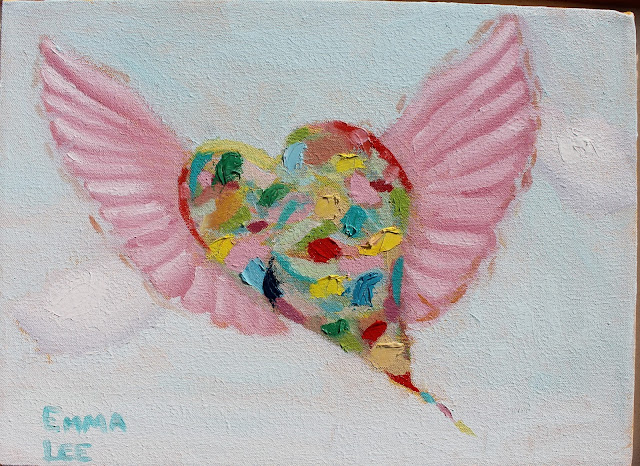You hear me talk incessantly about "saturated color" all the time in class. I am often sure it is clear, but in fact it may not be. What I mean by including saturated color in your work is applying the color in a loaded brush, pure way. Often I see people load their brush timidly, then stretch that load out endlessly till it loses all it's brilliance and "saturation" What I encourage you to do instead, is think of every brushstroke more singularly, more "sculpturally", so that it has it's own voice in a chorus of brushstrokes. They then all sing separately together, to make a choir, a brighter painting. I include a couple of paintings here that I did in class as demos to illustrate the point. Again the subject is not the point, the brushstroke is. Each painting is a landscape in itself, each stroke a voice in that country.

" KOI Color" demonstration for the Fleet Landing class in Mayport, illustrating saturation of color and showing the idea that placing one color next to another creates the illusion of brightness.
Another version of "Tropical Color" above. I have done this painting many different ways over the years. This one was done rapidly, and in a more layered way, starting with warm magenta and orange base sketch washes, and building brightness through layering in of saturated strokes one on top of another.
Above:
A watercolor demo of the same idea, placing each color separately and
graphically next each other to achieve a brighter mosaic or cloisonne
effect.
The
painting at the bottom of this post "Let your imagination fly" is an
oil painting by Emma Lee. I teach the same lesson in oils, acrylics or
watercolors. She was entering this painting in a contest and as the
teacher I was proud to show her work off here!















